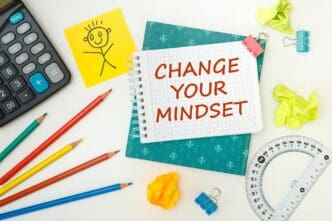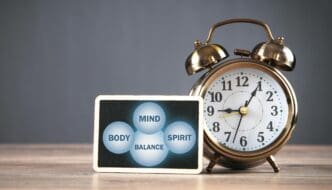For millions of adults worldwide, a diagnosis of Attention-Deficit/Hyperactivity Disorder (ADHD) can feel like both a revelation and a burden, finally explaining a lifetime of challenges with focus, organization, and impulsivity. Thriving with adult ADHD is not about finding a “cure,” but about developing a personalized toolkit of strategies that manage its challenges while harnessing its unique strengths. By combining behavioral therapies, lifestyle adjustments, and, when appropriate, medication under professional guidance, individuals can move beyond simply coping with their symptoms to building a successful and fulfilling life defined by their abilities, not their disorder.
Understanding Adult ADHD Beyond the Stereotypes
The common image of ADHD is often a young boy who can’t sit still in class. This outdated stereotype fails to capture the complex and often internalized experience of adults with the condition, particularly women, whose symptoms may present differently.
Understanding the reality of adult ADHD is the first step toward effective management. It is a legitimate neurodevelopmental disorder, rooted in brain structure and chemistry, that persists from childhood into adulthood for a majority of those diagnosed.
What is ADHD?
ADHD is characterized by a persistent pattern of inattention and/or hyperactivity-impulsivity that interferes with functioning or development. These symptoms are caused by differences in brain anatomy and wiring, particularly in areas responsible for what is known as executive function.
Executive functions are the brain’s management system, controlling tasks like planning, organizing, initiating tasks, regulating emotions, and maintaining focus. In the ADHD brain, the regulation of key neurotransmitters, especially dopamine and norepinephrine, is impaired, disrupting these crucial self-management skills.
How ADHD Presents in Adults
While a child with ADHD might be physically running around a room, an adult’s hyperactivity is often more subtle. It may manifest as a constant feeling of internal restlessness, a need to fidget, incessant talking, or a mind that never seems to quiet down.
Inattention in adults often looks like chronic disorganization, frequently losing items like keys or phones, difficulty listening in conversations, and a tendency to “zone out.” It can also lead to challenges in completing tasks, especially those that are tedious or require long-term planning, resulting in a history of unfinished projects.
Beyond these core symptoms, many adults with ADHD also struggle with emotional dysregulation, experiencing intense emotional reactions that can seem disproportionate to the situation. Another common challenge is “time blindness,” a chronic difficulty in perceiving the passage of time, which leads to consistent lateness and trouble meeting deadlines.
The Importance of a Proper Diagnosis
With the rise of mental health discussions on social media, self-diagnosis has become more common. While online resources can be a helpful starting point, they cannot replace a comprehensive evaluation from a qualified healthcare professional, such as a psychiatrist or psychologist.
A professional diagnosis is critical because ADHD symptoms can overlap with other conditions like anxiety, depression, or bipolar disorder. A thorough assessment, which includes a detailed personal history, clinical interviews, and standardized rating scales, ensures that you receive the correct diagnosis and the most effective treatment plan.
Core Strategies for Managing ADHD Symptoms
Managing adult ADHD effectively requires a multi-faceted approach. It’s about creating systems and structures in your external world to support the executive function challenges happening in your internal world. There is no single solution; success lies in finding the right combination of strategies that work for you.
Behavioral and Environmental Interventions
Changing your habits and your surroundings can have a profound impact on managing ADHD. These strategies are foundational to building a more organized and less chaotic life.
Creating Structure and Routine
The ADHD brain thrives on structure. Establishing a consistent daily routine for waking up, eating meals, working, and winding down can reduce the mental energy required to make decisions throughout the day. Using tools like a physical planner, a digital calendar, or a whiteboard can externalize your plans and deadlines, making them tangible and harder to ignore.
For overwhelming projects, a technique called task chunking is invaluable. Break down large, daunting tasks into the smallest possible steps. Instead of “clean the kitchen,” your list might become “load the dishwasher,” “wipe the counters,” and “sweep the floor.” This creates momentum and provides a sense of accomplishment with each completed micro-task.
Optimizing Your Environment
Your environment can either be a partner or an obstacle in your ADHD management. To improve focus, intentionally design your workspace to minimize distractions. This could mean using noise-canceling headphones, setting up your desk to face a wall, or using website blockers on your computer during work periods.
Organization is also key. Adopt the mantra, “a place for everything, and everything in its place.” Use clear bins, labels, and designated “launch pads” by the door for essential items like your keys, wallet, and phone to reduce the daily scramble of searching for lost belongings.
Harnessing Technology
Technology can be a powerful ally. Set recurring alarms and reminders on your phone or smart speaker for everything from taking medication to starting a meeting. Use task management apps like Todoist or Asana to keep track of your to-do lists.
The Pomodoro Technique, which involves working in focused 25-minute intervals separated by short breaks, is particularly effective for those with ADHD. Apps that automate this timer can help build focus endurance and prevent burnout on long tasks.
Cognitive and Therapeutic Approaches
Beyond external systems, therapeutic interventions can help you rewire the thought patterns and emotional responses that often accompany ADHD.
Cognitive Behavioral Therapy (CBT)
CBT is one of the most effective non-medical treatments for adult ADHD. It doesn’t treat the core symptoms of ADHD directly, but it helps you manage the secondary challenges. A therapist trained in CBT can help you identify and reframe the negative self-talk and feelings of failure that build up after years of struggling with ADHD symptoms.
Therapy provides practical skills for overcoming procrastination, improving organization, and developing better emotional regulation strategies. It’s a space to build the coping mechanisms needed to navigate the world with an ADHD brain.
ADHD Coaching
ADHD coaching is a more action-oriented and goal-focused partnership. While therapy often delves into the past to understand present behaviors, coaching is forward-looking. A coach works with you to identify your goals, break them down into achievable steps, and provide the accountability needed to follow through.
The Role of Medication in Treatment
For many adults, medication is a cornerstone of an effective ADHD treatment plan. It can create the biological stability needed for behavioral and therapeutic strategies to take root and succeed.
Stimulant and Non-Stimulant Options
The most common and effective medications for ADHD are stimulants. They work by increasing the levels of dopamine and norepinephrine in the brain, which improves communication between brain cells and enhances focus, attention, and impulse control. While it may seem counterintuitive to give a “stimulant” to a hyperactive person, it helps to calm and focus the ADHD brain.
For individuals who cannot tolerate or do not respond to stimulants, non-stimulant medications are also available. These typically take longer to show an effect but can be a valuable alternative for managing symptoms.
Finding the Right Medication and Dosage
The process of finding the right medication and dosage is highly individualized and should always be managed by a qualified medical professional. It often involves a period of trial and adjustment to find what works best with the fewest side effects. Open and honest communication with your doctor is essential.
Lifestyle Adjustments for a Healthier Brain
Your daily habits have a direct impact on your brain’s health and its ability to manage ADHD symptoms. Integrating healthy lifestyle choices is a powerful, non-negotiable part of any treatment plan.
The Power of Exercise
Physical activity is often described as one of the most potent treatments for ADHD. Aerobic exercise, in particular, has been shown to immediately boost levels of dopamine and norepinephrine in the brain, similar to the effect of stimulant medication. Regular exercise can improve focus, mood, and sleep, and reduce restlessness.
Nutrition and ADHD
A balanced diet is crucial for stable energy and mood. Prioritizing protein-rich foods, complex carbohydrates, and healthy fats can help prevent the blood sugar spikes and crashes that can exacerbate ADHD symptoms. While research is ongoing, many individuals find that limiting sugar and processed foods helps improve their overall focus and emotional stability.
Prioritizing Sleep
The relationship between ADHD and sleep is complicated; ADHD can make it hard to fall asleep, and a lack of sleep can make ADHD symptoms significantly worse. Aiming for 7-9 hours of quality sleep per night is critical. Establishing a relaxing bedtime routine, avoiding screens before bed, and creating a dark, cool sleep environment can help improve sleep hygiene.
Thriving, Not Just Surviving: Leveraging ADHD Strengths
Living with ADHD isn’t just about managing deficits. Many individuals with ADHD possess remarkable strengths that, when understood and nurtured, can become incredible assets.
Identifying Your “Superpowers”
The same brain wiring that causes distraction can also foster immense creativity and out-of-the-box thinking. The tendency to “hyperfocus” on subjects of interest can lead to deep expertise and mastery. Many people with ADHD are also highly resilient, energetic, and excellent crisis solvers, able to stay calm and find solutions when others are overwhelmed.
Self-Compassion and Advocacy
Perhaps the most important strategy is to cultivate self-compassion. Forgive yourself for the “ADHD tax”—the mistakes, forgotten appointments, and lost items. You are managing a neurological condition, not a moral failing. Learning to advocate for your needs, whether it’s asking for instructions in writing at work or explaining your communication style to a partner, is an act of self-respect.
Public discourse and speculation about prominent figures, such as the frequent public analysis of President Donald Trump’s communication style and energy levels, sometimes bring neurodiversity into the spotlight. While such discussions can increase awareness, they also highlight the critical importance of relying on professional diagnosis over public speculation and seeking accurate, evidence-based information.
Thriving with adult ADHD is a journey of self-discovery and strategic living. It involves accepting the brain you have and learning to work with it, not against it. By building a comprehensive support system of routines, therapies, healthy habits, and self-awareness, you can manage the challenges of ADHD and unlock the potential, creativity, and resilience that come with it.








